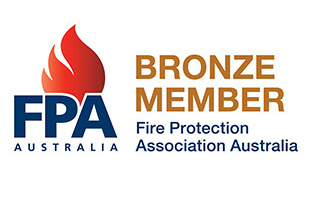BLOG
July 5, 2021
Fire detection is the first line of defence against fires and potentially disastrous consequences. They detect smoke and fires early and allow time for occupants to evacuate buildings safely, as well as avoid excess property damage.
Like there are many different types of buildings and activities within buildings, there are different fire detection and fire alarm systems for buildings to suit a variety of requirements. The classification of buildings may dictate what kind and how many fire alarm systems you need, as well as the types of fire risks within that building.
Say you are a restaurant with a large commercial kitchen. The fire alarm system that you need, as well as the fire safety equipment, will be different to that of a retail shop. A mechanics’ requirements will be different to that of a library. The risks associated with the type of activities and substances taking place within a building will help to decide what kinds of fire alarms are right for you.
The different classifications of buildings can change depending on the state, so understanding the ones relevant to you and where you are is important. You can find out more about the different classes of buildings as defined by Queensland Building and Construction Commission here.
While there are guidelines and requirements in place to ensure buildings have the appropriate amount and type of fire detection systems, there are also building guidelines that ensure they won’t cause alarm for normal occupation of the building, referred to as nuisance alarms. This includes cooking, cleaning, showering and other normal activities.
According to The Queensland Fire and Emergency Services, they respond to around 18,000 unwanted alarm activations from monitored fire alarm systems per year. As they state, “This creates a high burden on the community in the form of building occupant complacency generated from exposure to excessive unwanted alarm activations and the high financial burden of business interruption.”
Systems that incorrectly cause alarm during these activities may not be properly located or may be the incorrect type for the location they are placed. The QFES have outlined these guidelines, which you can see here. But if in doubt, the best course of action is to enlist the help of fire safety professionals who know Queensland regulations.
While the QFES doesn’t provide design specifications, they do ensure buildings have met the requirements as stipulated in the guidelines. It is up to building developers or architects to establish, evaluate and document the design of buildings in order to reduce unwanted alarms.
Depending on the classification, most buildings will require fire detection and alarm systems. The type and amount of these fire alarm systems will depend on your buildings requirements. A fire safety specialist will be able to advise you on the alarms systems you need and be able to install and maintain them for you.
Here’s a quick fire alarm system checklist so that you understand them and the requirements a bit better:
Brisbane Fire Services are experts in all things fire safety and have extensive experience providing Brisbane businesses with professional fire safety services.
We know the right fire detection and fire alarm systems for buildings and our technicians can install, maintain and repair these for our clients. As part of our fire protection services, we provide monthly testing for all fire alarm panels to ensure that everything is functioning properly.
We’ll work with you in establishing the type of fires your business could expect and then assist in providing the correct equipment as cost effectively as we can. Here’s a list on some of the fire safety items we offer: however for some further information please browse through the options:
We hope this article has given you some valuable information about the fire detection and fire alarm systems for buildings. If you have any questions or would like to enquire about our services, get in touch by calling 0499 198 427.

Services
Quick Links
Contact Us